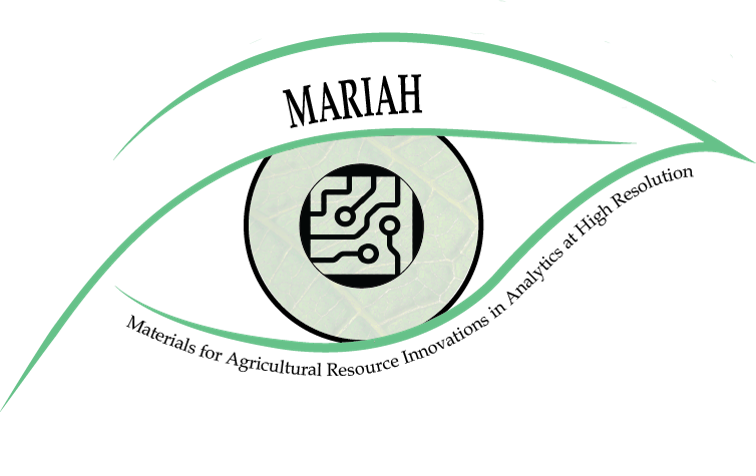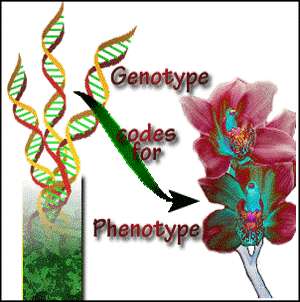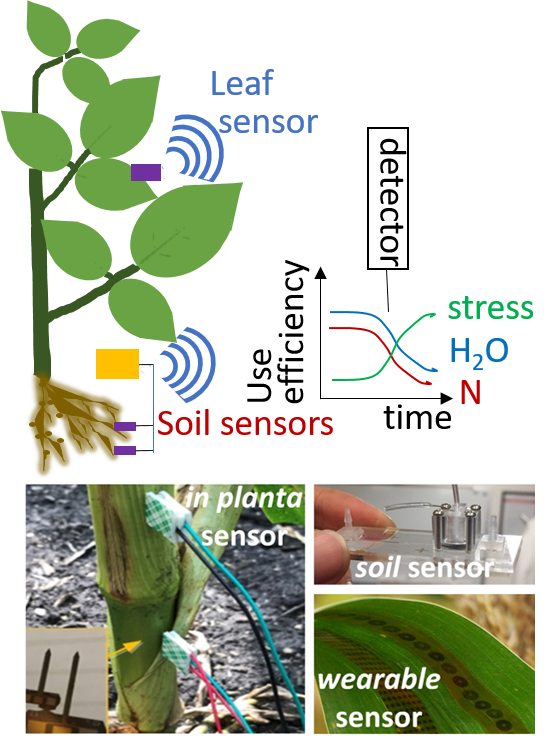Materials for Agriculture Resource Imaging Analytics at High Resolution (MARIAH)

Abiotic stresses such as drought, salinity, and extreme temperatures and biotic stresses like weeds insects and diseases currently reduce crop yields to less than 50% of their potential. Furthermore, climate change is projected to exacerbate these losses. Breeding for crop varieties with enhanced stress resistance is a useful technique to reduce these losses, but this process is hindered by phenotyping bottlenecks and limited knowledge of the genetic bases of different forms of stress resistance. Management practices such as irrigation, fertilization, cultivation, and pesticides also are important tools to compensate for plant stress, but they have significant economic and environmental costs. Moreover, the economic and environmental outcomes of growers’ cropping decisions are shaped by a complex network of interactions that are not yet understand well enough to predict. This network includes multifactorial interactions among:

- The genetics (G) of the crop, its pests, and other organisms in the environment;
- environmental conditions (E) such as temperature, rainfall, and soil type;
- The growers’ management decisions (M) such as irrigation, fertilization, and pest management; and
- socioeconomic factors (S) such as commodity prices, crop insurance, producer and consumer attitudes and values.
We propose that these interactions can be fully understood through an interdisciplinary systems approach that teams experts in plant science and agronomy with experts in engineering and the physical and social sciences. To address this need, we have developed a land-grant network of collaborators nationwide (MARIAH) that aims to advance research on G x E x M x S (GEMS) systems, and to translate research findings into improved tool and evidence-based crop management approaches.
What is MARIAH?
MARIAH is an interdisciplinary land-grant network of collaborators established through a planning grant funded by the NSF Engineering Research Center program. It spans >9 universities, and brings together expertise in 8 key areas:
- Agronomy, Genetics and Plant Biology;
- Biological and Electrical Engineering;
- Robotic/Avionic Engineering;
- Physics and Biophysics;
- Geoscience, Soil, Environmental Science, and Civil Engineering;
- Computer Science and Statistics;
- Agribusiness, Management, and Entrepreneurship; and
- Education.
Members are working together with stakeholders in industry and state and federal regulators to develop an innovative systems approach to engineer decision support systems for sustainable agriculture. Their unique systems approach will integrate development of new sensing tools, data management and analytics for plant scientists and agricultural producers. Activities for 2019 include workshops to solicit stakeholder input on research priorities, as well as student design competitions to engage the next generation of MARIAH scientists.
Goals
- Develop decision support systems (DSS) for plant scientists to facilitate crop breeding, optimize management practices, and support research in sustainable agriculture
- Develop DSS for agricultural producers, to maximize agricultural productivity and profitability while minimizing environmental externalities.
- Train an interdisciplinary and inclusive workforce to deploy these DSS ethically and profitably
- Engage stakeholders to promote the adoption of DSS and to refine DSS based on stakeholder feedback
Approach
To better measure plant health and resource use efficiency, we will develop novel sensors positioned on plants, in the soil) or on remote sensing platforms such as small unmanned aerial systems (sUAS). Using new ontologies, harmonized-data analysis, and artificial intelligence (AI), data from our sensors will be integrated with other sources such as publically-accessible satellite imagery to model important processes such as cycling of carbon, nitrogen, and water at multiple spatial scales. Machine learning will be developed to link interactions between genotype, environment, management practices, and socioeconomic factors to form GEMS-based prescriptions.

Novel on-plant or in-soil sensors for plant health
Furthermore, what we learn about GEMS interactions and the functioning of agricultural systems will be translated, using AI, into decision support systems (DSS) for agricultural researchers and agricultural producers. DSS for researchers will help identify genetic bases for phenotypic traits and select for stress-resistant cultivars. DSS for producers will provide a risk-based tool to manage crops on the basis of real-time information on plant health, environment, resources, and estimated profits.
Opportunities to Get Involved
Community Needs Survey.
Please give us your input on top priorities for developing new plant phenotyping technologies with this survey
Upcoming Workshops.
Please join us for MARIAH workshops at:
- The Institute of Biological Engineering (IBE) Annual Meeting, St. Louis MO, Apr 4-6, 2019
- Agricultural & Applied Economics Association (AAEA) Preconference Workshop, Atlanta GA, July 20, 2019
- MARIAH Roadmapping Workshop, Athens GA, June 2019
Student Design Forum.
Contact us to evaluate entries in our national student design contest and bioethics essay contests (ad hoc and/or in person at the IBE meeting). Students will present their ideas in St. Louis, MO, on Saturday April 6, 2019, 9-11 am. Student entries address the ethics of big data in bioengineered systems for agriculture and health, and propose innovative solutions to complex climactic and ecological stresses that constrain agricultural productivity and profitability.

MARIAH Workshop at the Plant and Animal Genome Conference, San Diego, CA, Jan. 2019. Larry Purcell, Univ of Arkansas, presenting (image on left). Invited speakers from left to right (in group photo): Liang Dong (Iowa State U), Charlie Li (U Georgia), Larry Purcell (Univ of Arkansas), Katy Rainey (Purdue U.), Keith Roper (USU), Gregoire Hummel (Phenospex), Kusum Naithani (U. Arkansas), Carolyn Lawrence-Dill (Iowa State U), Pankaj Jaiswal (Oregon State U)
Acknowledgements
This work was funded by the National Science Foundation Award Number EEC 1920042. Any opinions, findings, and conclusions or recommendations expressed in this material are those of the author(s) and do not necessarily reflect the views of NSF.


